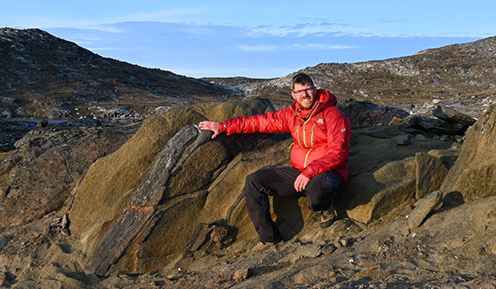Meteorites from the outer Solar System created Earth’s oceans
Kristoffer Szilas of the Department of Geosciences and Natural Resource Management at the University of Copenhagen and colleagues at the University of Cologne have proved that the Earth was formed by material from a type of meteorite that has not yet been identified, whereas the oceans have their origins in the outer Solar System. The study has just been published in Nature.
Assistant Professor Kristoffer Szilas has devoted his career to researching the geology of Greenland, and has spent 12 seasons in the field in the south-west of the vast island collecting some of the world’s oldest rocks. His hard work has now borne fruit.
The key to the results was a combination of Szilas’ extensive collection of ancient Greenlandic rocks and his collaboration with colleagues at the University of Cologne in Germany, which houses one of only a handful of laboratories in the world able to make high-precision measurements of isotopes of the element ruthenium.

Meteorites created Earth’s building blocks
The results of advanced isotope measurements of rocks found in Greenland that are approximately four billion years old show that the planet Earth contains materials that must have been added after its initial formation. These materials originated in the outer Solar System, where there are large amounts of water in the form of carbonaceous chondrite asteroids, which also contain the organic chemical compounds that form the building blocks of all life on Earth.
The new account of the Earth’s formation is based on ruthenium’s unusual isotope signature.
“Without getting too technical, you might say that the ruthenium we found in these old rocks in Greenland proves that a particular type of meteorite, rich in water and carbon, struck the planet sometime after its initial formation. These meteorites added what is called the ‘late veneer’ to the planet, and created the building blocks that gave rise to both the oceans and life on Earth,” Szilas explains.
The Oldest Rocks on Earth
The new discoveries are part of Szilas’ research project “The Oldest Rocks on Earth”.
The next stage will consist of measuring the composition of the osmium isotopes in the unique samples from Greenland in order to determine the rocks’ exact age and the magmatic processes that produced them. These results will have great significance for our understanding of the earliest geological processes on Earth and the subsequent formation of the continents.
The Carlsberg Foundation is funding the project.
Contact
Kristoffer Szilas
Assistant professor
krsz@ign.ku.dk
Tel.: +45 35 32 65 47
Anette Bill-Jessen
Communication Coordinator
anbj@ign.ku.dk
+45 93 51 13 70
